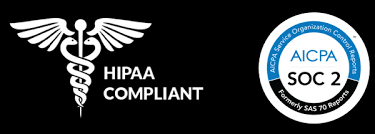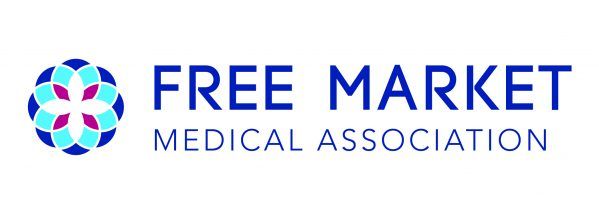Understanding Direct Specialty Care: What It Is and Why You Need It
Discover the Advantages and Why It Matters

Overview
- What is Direct Specialty Care?
- Key Components
- Benefits
- Comparison with Traditional Healthcare Models
- Types of Services
- Implementation of Direct Specialty Care
What is Direct Specialty Care?
Direct Specialty Care is a model of healthcare delivery that promotes the patient-physician relationship and removes third-party payors to protect the best interests of patients.
Direct Specialty Care is a healthcare model different from your typical fee-for-service and insurance billing type of medical practice. Instead, direct specialty care operates like a subscription service. Direct Specialty Care has an affordable membership fee. You join as a member, and, as such, you are entitled to medical services, discounted pricing, and many other services (e.g., nutrition, mindfulness, and physician therapy classes). It is a direct financial arrangement between the patient and the doctor. If you are familiar with the concept of Direct Primary Care, it is very similar in structure. The result is enhanced patient experience, better health outcomes, and more affordable medical care.
Key Components
A. Direct Access to Specialists
Streamlined Referrals: In the DSC model, patients can book appointments directly with specialists without needing a referral from a primary care physician. This approach minimizes delays in accessing specialized care, ensuring more timely and effective interventions.
Enhanced Patient-Provider Relationship: DSC facilitates more extended and direct interactions between patients and specialists. This increased communication allows specialists to gain a comprehensive understanding of each patient's health history, lifestyle, and concerns, leading to more personalized care and improved health outcomes.
B. Personalized and Focused Care
Comprehensive Consultations: In the Direct Specialty Care (DSC) model, appointments are significantly longer, often ranging from 30 to 60 minutes or more, compared to the typical 15-minute slots in traditional settings. This extended time allows for thorough discussions, detailed examinations, and more comprehensive care planning, ensuring that patients receive the attention and care they need.
Tailored Treatment Plans: Specialists in DSC can develop highly individualized treatment plans that consider not only the medical condition but also the patient's lifestyle, preferences, and long-term health goals. This personalized approach is especially advantageous for managing complex or chronic conditions, providing patients with a more holistic and effective care experience.
C. Transparent and Predictable Costs
Clear Pricing Models: DSC practices typically offer a transparent and straightforward pricing structure for all services, which may include:
Flat-Rate Fees: Set fees for specific procedures, ensuring no surprises in billing.
All-Inclusive Membership Fees: Monthly or annual fees that cover a wide range of services.
Tiered Pricing: Different service levels with corresponding pricing, allowing patients to choose the plan that best fits their needs.
D. Subscription Fees
Many DSC practices utilize a subscription model where patients pay a recurring fee, either monthly or annually. This fee often covers:
Unlimited Consultations: Patients can see their specialists as often as needed without additional charges.
Basic Procedures and Treatments: Routine care is included in the subscription.
Discounts on Additional Services:
Reduced rates for services not covered by the subscription.
This model provides financial predictability for patients, eliminating unexpected costs and offering peace of mind, while also ensuring a stable income for specialists, allowing them to focus on delivering high-quality care.
Benefits
A. Improved Patient Outcomes
Specialized Expertise: DSC enables patients to engage closely with specialists who possess in-depth knowledge and experience in specific conditions. This concentrated expertise often leads to more accurate diagnoses, more effective treatments, and better management of complex health issues.
Holistic Care Management: The continuous nature of care in DSC models allows specialists to monitor patient progress closely, make timely adjustments to treatment plans, and promptly address emerging health issues. This proactive approach can prevent complications and significantly improve overall health outcomes.
B. Patient Satisfaction and Engagement
Personal Attention: The increased time and attention provided by specialists in DSC models often results in higher patient satisfaction. Patients feel heard, valued, and more involved in their healthcare decisions, fostering a stronger patient-provider relationship.
Empowered Patients: With direct access to specialists and in-depth education about their conditions, patients in DSC models often become more engaged in managing their health. This increased engagement can lead to better adherence to treatment plans and healthier lifestyle choices.
C. Cost-Effectiveness
Elimination of Middlemen: By removing insurance companies from the equation, DSC reduces administrative overhead and potentially lowers overall healthcare costs. This can lead to financial savings for both patients and providers.
Preventative Care Focus:
Emphasizing preventive care and early intervention in DSC models helps avoid costly emergency treatments and hospitalizations. This proactive approach not only enhances patient health but also reduces long-term healthcare expenses.
Comparison with Traditional Healthcare Models
Traditional healthcare models often entail lengthy wait times to see specialists, limited appointment durations, and intricate billing processes. In contrast, DSC addresses these challenges by offering:
Quicker Access to Specialists: Patients can see specialists sooner, reducing the time to receive necessary care.
Longer, More Comprehensive Appointments: Specialists can spend more time with each patient, ensuring thorough evaluations and care plans.
Simplified, Transparent Pricing: Clear, upfront costs eliminate the confusion associated with traditional billing.
Continuous Care:
DSC promotes ongoing patient care rather than episodic treatments, enhancing overall health management.
Types of Services
A. Chronic Disease Management
Diabetes Care: Comprehensive diabetes management includes regular blood sugar monitoring, medication management, nutritional counseling, and education on lifestyle modifications.
Cardiology: Specialized heart care services such as advanced cardiac imaging, stress testing, heart rhythm monitoring, and ongoing management of conditions like hypertension and heart failure.
B. Advanced Diagnostics and Treatments
Imaging Services: Quick access to advanced imaging techniques like MRI, CT scans, and ultrasounds, often at lower costs than traditional healthcare settings.
Surgical Procedures: Minor surgical procedures that can be safely performed in an outpatient setting, such as skin biopsies, minor orthopedic procedures, or endoscopies.
C. Specialty Consultations
Dermatology: Comprehensive skin care services, including treatment of skin conditions, cosmetic procedures, and skin cancer screenings.
Orthopedics:
Specialized care for musculoskeletal issues, including joint pain management, sports injury treatment, and rehabilitation services.
Implementation of Direct Specialty Care
A. Establishing Direct Care Practices
Setting Up Clinics: This involves:
- Selecting and equipping appropriate facilities.
- Implementing necessary technology (EHR systems, telemedicine platforms).
- Hiring support staff (nurses, technicians, administrative personnel).
- Developing operational protocols and procedures.
Developing Pricing Models: Requires careful consideration of:
- Operational costs.
- Desired patient panel size.
- Range of services offered.
- Local market conditions and competition.
B. Patient Enrollment and Education
Outreach Programs: These may include:
- Informational seminars and webinars.
- Community health fairs.
- Partnerships with local businesses and organizations.
- Digital marketing campaigns.
C. Integration with Primary Care
Collaborative Networks: Building relationships with primary care providers through:
- Professional networking events.
- Shared continuing education opportunities.
- Collaborative care agreements.
Shared Medical Records: Implementing secure systems for sharing patient information, such as:
- Interoperable Electronic Health Record (EHR) systems.
- Health Information Exchanges (HIEs).
- Secure messaging platforms for provider-to-provider communication.
Conclusion
Direct Specialty Care revolutionizes healthcare by fostering a direct financial relationship between patients and physicians, bypassing third-party payors. This model ensures patients receive personalized, high-quality care with enhanced access to medical services and holistic health benefits. By focusing on the patient-physician relationship and offering an affordable membership, Direct Specialty Care delivers better health outcomes, reduced medical costs, and an improved patient experience.
- Direct Specialty Care in North Carolina
- Direct Specialty Care in North Dakota
- Direct Specialty Care in Ohio
- Direct Specialty Care in Oklahoma
- Direct Specialty Care in Oregon
- Direct Specialty Care in Pennsylvania
- Direct Specialty Care in Rhode Island
- Direct Specialty Care in South Carolina
- Direct Specialty Care in South Dakota
- Direct Specialty Care in Iowa
- Direct Specialty Care in Tennessee
- Direct Specialty Care in Texas
- Direct Specialty Care in Utah
- Direct Specialty Care in Vermont
- Direct Specialty Care in Virginia
- Direct Specialty Care in Washington
- Direct Specialty Care in West Virginia
- Direct Specialty Care in Wisconsin
- Direct Specialty Care in Wyoming
- Direct Specialty Care in Alaska
- Direct Specialty Care in Arizona
- Direct Specialty Care in Arkansas
- Direct Specialty Care in California
- Direct Specialty Care in Colorado
- Direct Specialty Care in Connecticut
- Direct Specialty Care in Delaware
- Direct Specialty Care in District of Columbia
- Direct Specialty Care in Florida
- Direct Specialty Care in Georgia
- Direct Specialty Care in Hawaii
- Direct Specialty Care in Idaho
- Direct Specialty Care in Illinois
- Direct Specialty Care in Indiana
- Direct Specialty Care in Kansas
- Direct Specialty Care in Kentucky
- Direct Specialty Care in Louisiana
- Direct Specialty Care in Maine
- Direct Specialty Care in Maryland
- Direct Specialty Care in Massachusetts
- Direct Specialty Care in Minnesota
- Direct Specialty Care in Mississippi
- Direct Specialty Care in Missouri
- Direct Specialty Care in Michigan
- Direct Specialty Care in New Hampshire
- Direct Specialty Care in New Jersey
- Direct Specialty Care in New Mexico
- Direct Specialty Care in New York
Do you have any other questions?



